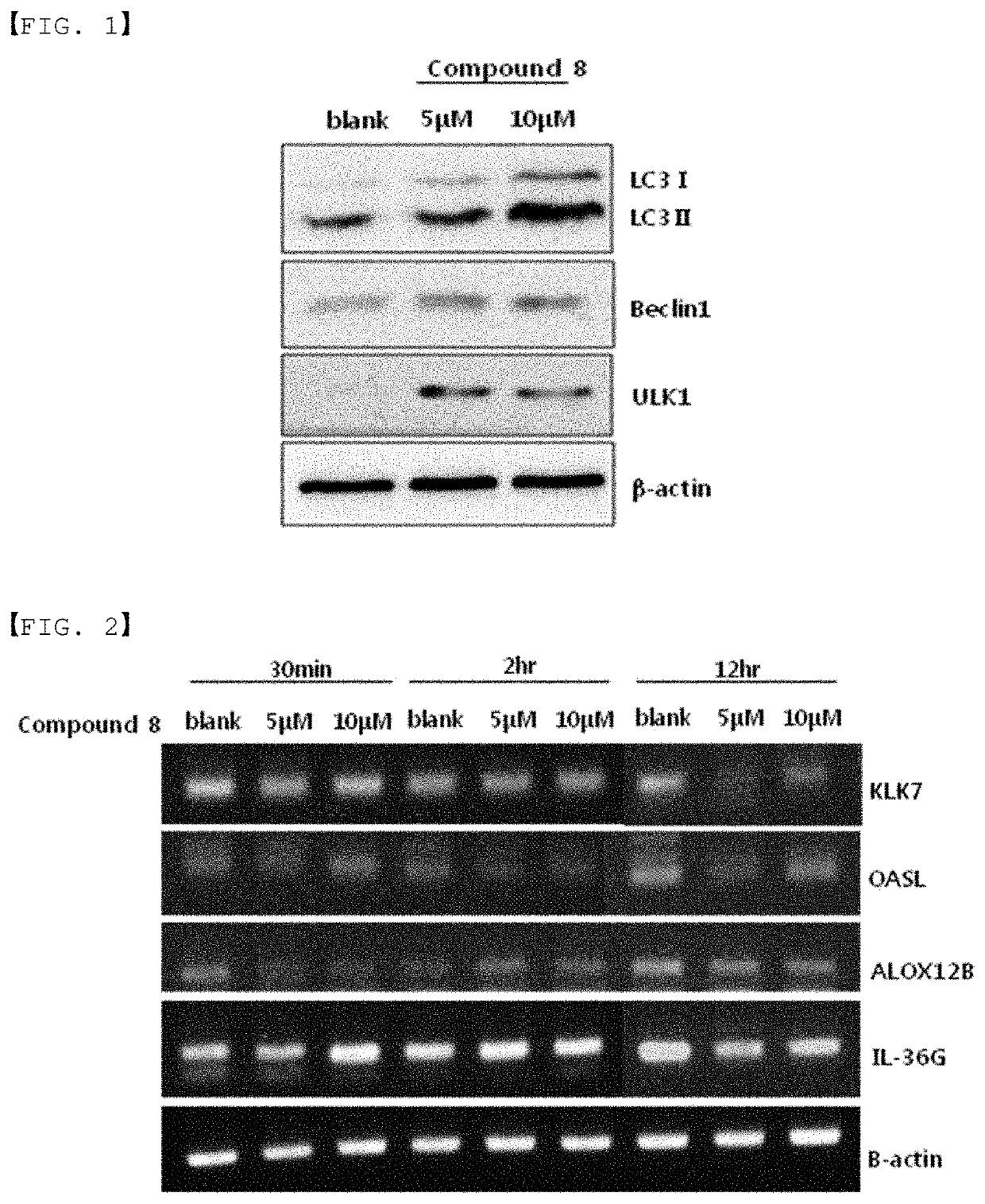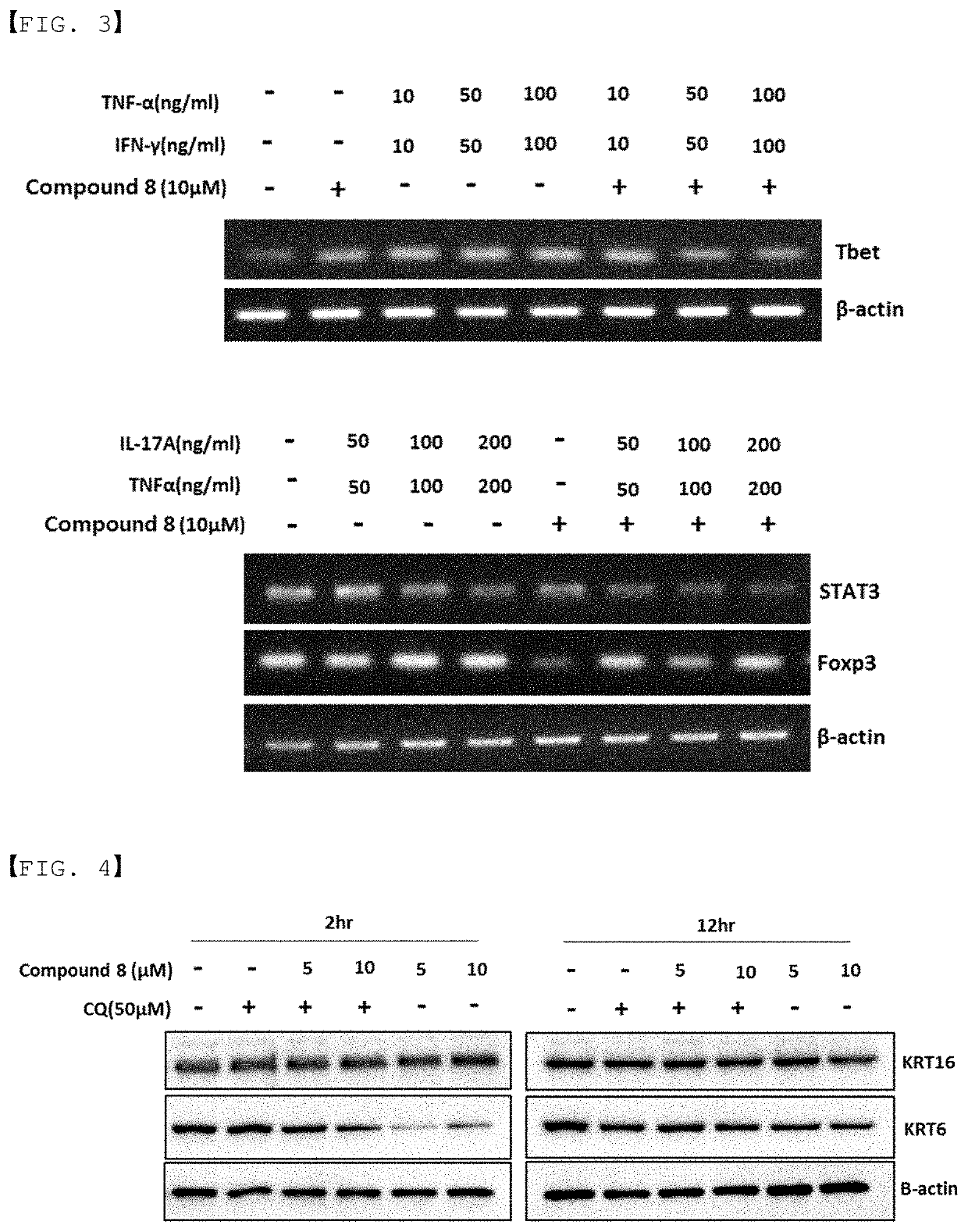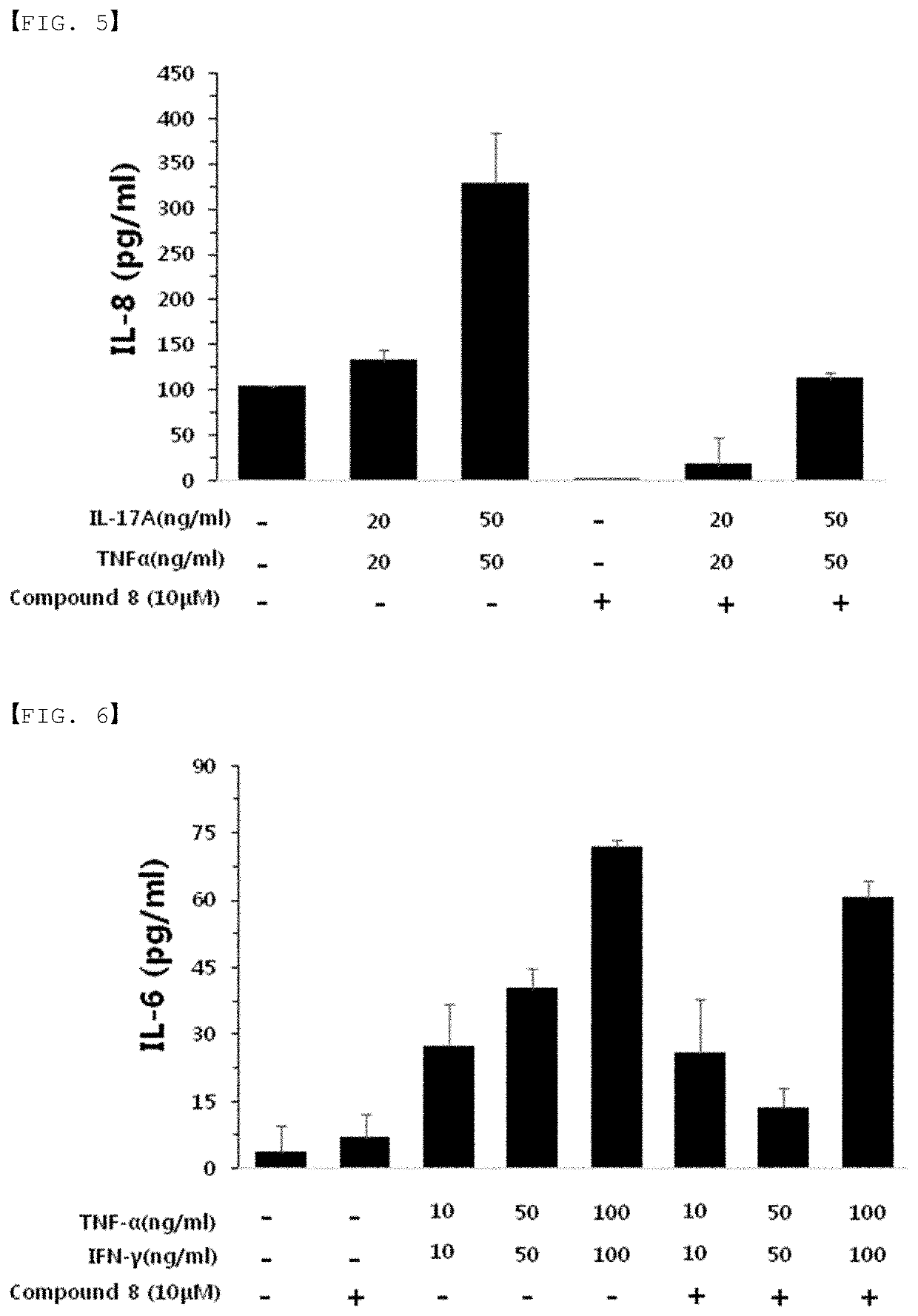Autophagy activation-induced compound for improving skin inflammation for aging
a technology of autophagy activation and skin inflammation, applied in the field of compounds, can solve the problems of apoptosis, aging promotion, and increase of free radicals and oxidative stress in cells, and achieve the effects of increasing the expression of autophagy-related proteins, and effective treatment and prevention of autophagy-related diseases
- Summary
- Abstract
- Description
- Claims
- Application Information
AI Technical Summary
Benefits of technology
Problems solved by technology
Method used
Image
Examples
example 1-1
Synthesis of Compound 1a
[0107]
[0108]Into an 800 ml reaction vessel, 2-chloro trityl chloride resin (100-200 mesh, Novabiochem, 20 g, 1 eq.), Fmoc-Lys(Dde)-OH(Nα-Fmoc-Nε-Dde-L-lysine,Nα-Fmoc-Nε-[1-(4,4-dimethyl-2,6-dioxocyclohexylidene)ethyl]-L-lysine) (21.3 g, 2 eq.), and DIPEA (29.9 ml, 8 eq.) were added together with DCM (700 ml), and reacted at room temperature for 12 hours. The reaction solution was removed by filtering, and the synthesized resin was sequentially washed using 500 ml of each of DCM (dichloromethane) and MeOH, DCM, and DMF (dimethylformamide). Vacuum drying was carried out to obtain 23 g of Compound 1a (Fmoc-Lys(Dde)-O-2-chloro trityl resin) in a solid phase form at a yield of 99%.
example 1-2
Synthesis of Compound 1b
[0109]
[0110]Into an 800 ml reaction vessel, Compound 1a and 700 ml of 20% piperidine in DMF were added, reacted at room temperature for 5 minutes, and filtered to remove the reaction solution. 700 ml of 20% piperidine in DMF was added once more, and reacted at room temperature for 5 minutes. The reaction solution was removed by filtering, and the synthesized resin was sequentially washed using 500 ml of each of DCM, MeOH, DCM and DMF. To the product from which Fmoc in a solid phase form was removed by vacuum drying, Fmoc-Lys(Fmoc)-OH (47.3 g, 4 eq.), HOBt (10.8 g, 4 eq.) and DIC (12.4 ml, 4 eq.) dissolved in 600 ml of DMF were added, and reacted at room temperature for 4 hours. The reaction solution was removed by filtering, and the synthesized resin was sequentially washed using 500 ml of each of DCM and MeOH, DCM, and DMF. Vacuum drying was carried out to obtain 25 g of Compound 1b (Fmoc-Lys(Fmoc)-Lys(Dde)-O-2-chloro trityl resin) in a solid phase form at a...
example 1-3
Synthesis of Compound 1c
[0111]
[0112]Into an 800 ml reaction vessel, Compound 1b and 700 ml of 20% piperidine in DMF were added, reacted at room temperature for 5 minutes, and filtered to remove the reaction solution. 700 ml of 20% piperidine in DMF was added once more, and reacted at room temperature for 5 minutes. The reaction solution was removed by filtering, and the synthesized resin was sequentially washed using 500 ml of each of DCM and MeOH, DCM, and DMF. To the product from which Fmoc in a solid phase form was removed by vacuum drying, tert-butyl bromoacetate (59.1 ml, 20 eq.) and DIPEA (69.7 ml, 20 eq.) dissolved in 600 ml of DMF were added, and reacted at room temperature for 12 hours. The reaction solution was removed by filtering, and the synthesized resin was washed using 500 ml of DMF. Again, 1,8-Bis(dimethylamino)naphthalene (85.7 g, 20 eq.), tert-butyl bromoacetate (59.1 ml, 20 eq.), and DIPEA (69.7 ml, 20 eq.) dissolved in 600 ml of DMF were added thereto, and react...
PUM
| Property | Measurement | Unit |
|---|---|---|
| wt. % | aaaaa | aaaaa |
| wt. % | aaaaa | aaaaa |
| weight | aaaaa | aaaaa |
Abstract
Description
Claims
Application Information
 Login to View More
Login to View More - R&D
- Intellectual Property
- Life Sciences
- Materials
- Tech Scout
- Unparalleled Data Quality
- Higher Quality Content
- 60% Fewer Hallucinations
Browse by: Latest US Patents, China's latest patents, Technical Efficacy Thesaurus, Application Domain, Technology Topic, Popular Technical Reports.
© 2025 PatSnap. All rights reserved.Legal|Privacy policy|Modern Slavery Act Transparency Statement|Sitemap|About US| Contact US: help@patsnap.com



